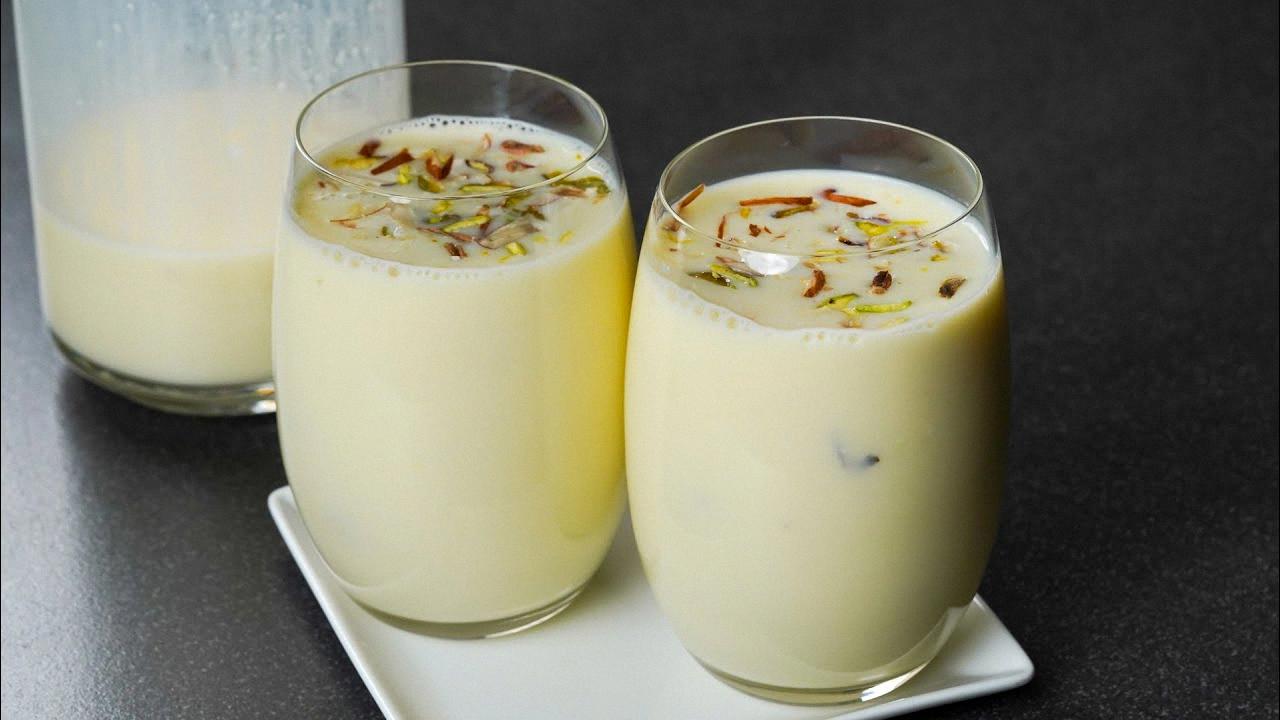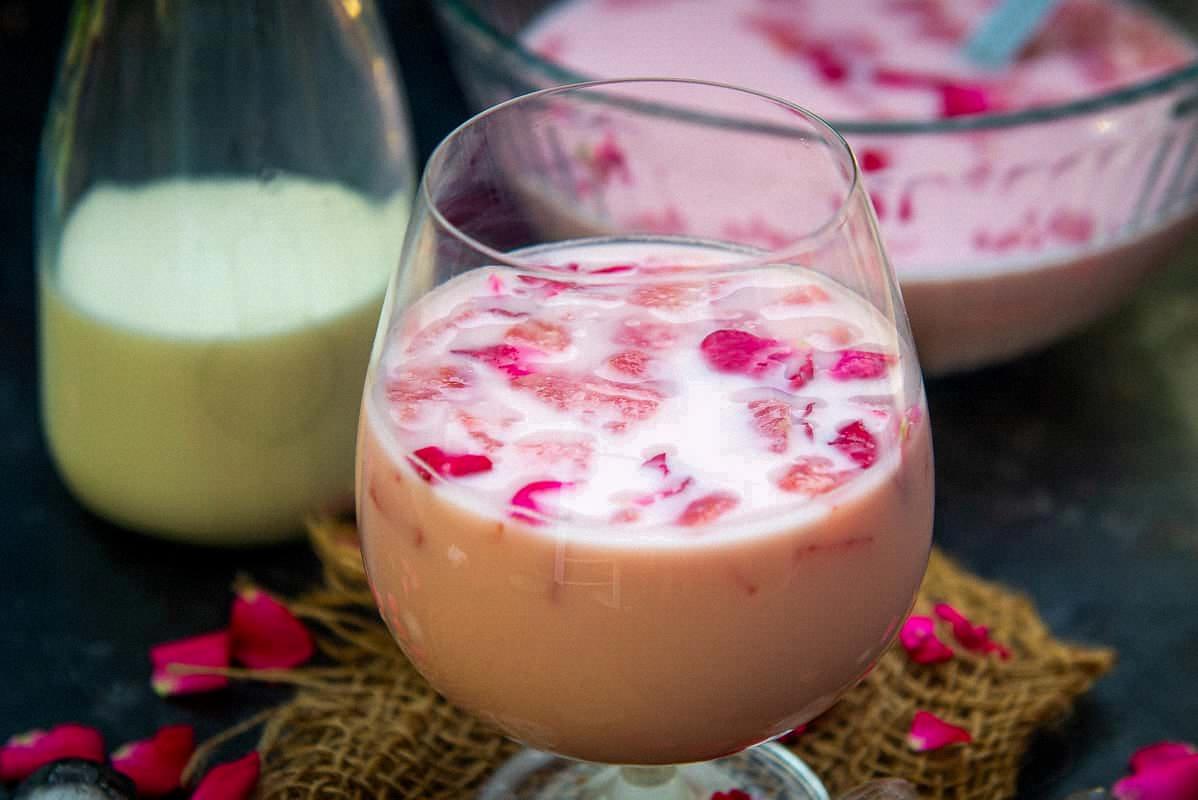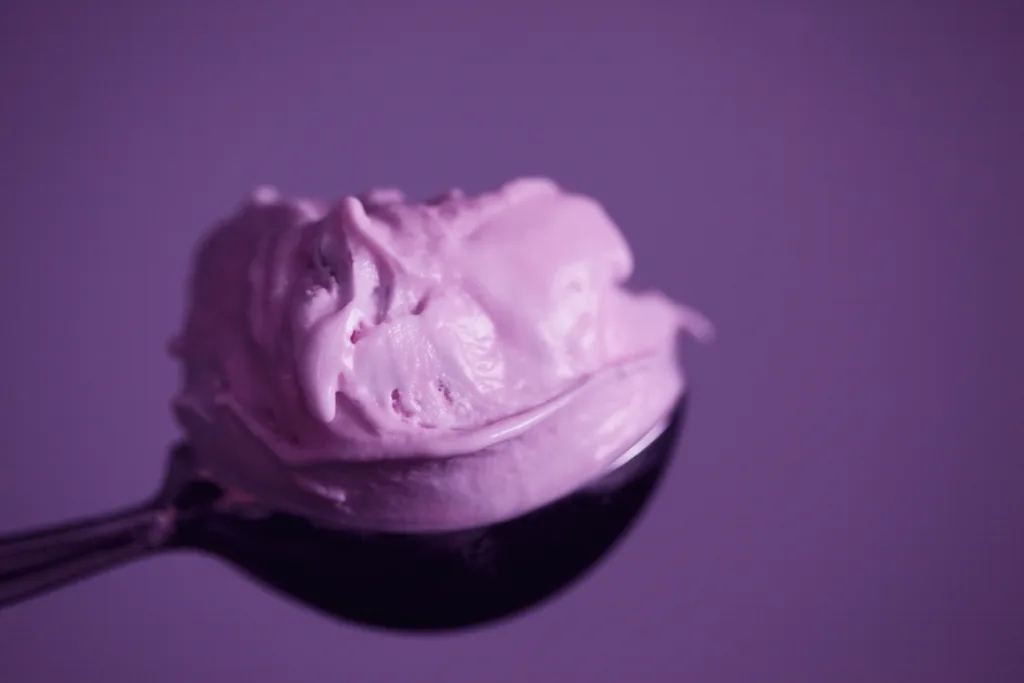Welcome to our blog where we explore the world of food and nutrition! Today, we’ll be answering one of the most commonly asked questions about sherbet – does sherbet have dairy in it? This is a question that often confuses many people, as sherbet is often thought to be a non-dairy frozen dessert. However, the answer is a little more complicated than a simple yes or no.
First, let’s start with the basics. Sherbet is a frozen dessert that is made with fruit and a dairy, like milk or cream. It’s diferent from ice cream or sorbet because it contains a small amount of dairy. The amount of dairy in sherbet is usually less than that of ice cream, which makes it a popular choice for those who are looking for a lighter and more refreshing frozen dessert.
Now, let’s dive a little deeper into the ingredients of sherbet. Sherbet typically consists of fruit juice or puree, sugar, water, and a dairy product. The dairy product used in sherbet can vary, but it’s usually milk, cream, or buttermilk. The dairy product is added to give the sherbet a creamier texture and a richer flavor.
So, does sherbet have dairy? it does. The dairy product used in sherbet means that it’s not suitable for those who are lactose intolerant or following a vegan diet. However, the amount of dairy in sherbet is usually small, which means that it’s a lower lactose food than ice cream or other dairy desserts.
It’s important to note that not all sherbets are created equal. Some brands may use more dairy than others, and some may even use non-dairy alternatives like coconut milk. It’s always a good idea to check the label to make sure you know what you’re getting.
Sherbet does contain dairy, but it’s typically a low-lactose frozen dessert. It’s a great option for those who want a lighter and more refreshing alternative to ice cream, but it’s not suitable for those who are lactose intolerant or following a vegan diet. We hope this clears up any confusion about sherbet and helps you make informed choices about what you eat.
Can Lactose Intolerant People Eat Sherbet?
Unfortunately, if you’re lactose intolerant, sherbet may not be the best dessert option for you. Sherbet is typically made with a combination of fruit and dairy, such as milk or cream. This means that there is lactose present in the dessert, which can cause discomfort for thoe with lactose intolerance.
Lactose intolerance is a condition where the body is unable to properly digest lactose, a sugar found in milk and other dairy products. When someone with lactose intolerance consumes dairy, they may experience symptoms such as bloating, gas, and diarrhea.
However, there are some alternatives to traditional sherbet that may be suitable for those with lactose intolerance. Sorbet, for example, is a similar dessert that is made with fruit and sugar, but does not contain any dairy. Additionally, there are some brands of lactose-free sherbet available on the market.
If you’re lactose intolerant and considering eating sherbet, it’s best to check the ingredients and lactose content before indulging. It may be safer to opt for a dairy-free alternative or a lactose-free brand.

Source: youtube.com
Is Sherbet Dairy-Free?
All sherbet is not dairy-free. Unlike sorbet, which is made solely from water and fruit, sherbet typically contains dairy milk or cream as a main ingredient. This means that people who are lactose intolerant or have a dairy allergy should be cautious when consuming sherbet and carefully read the label to ensure that it does not contain any dairy products. It is always important to check the ingredients list before consuming any food to avoid any potential allergic or adverse reactions.
Which Is Dairy-free: Sherbet or Sorbet?
Sorbet is dairy-free, whereas sherbet contains a small amount of dairy. Sorbet is made from fruit juice or puree, water, and sugar, and does not contain any milk, cream, or buttermilk. On the other hand, sherbet uses similar ingredients to sorbet, but includes a small amount of dairy, usually milk, cream, or buttermilk. This dairy component gives sherbet a richer, creamier consistency than sorbet. So, if you are looking for a dairy-free option, sorbet is the way to go. However, if you don’t mind a bit of dairy, then sherbet can be a delicious alternative.
Is Sherbet High in Dairy Content?
Sherbet does contain some dairy, but it is not considered a high-dairy food. A cup of sherbet typically contains abot 4 to 6 grams of lactose, which is approximately the same amount of lactose found in a cup of yogurt. In comparison, a cup of ice cream contains twice as much lactose as sherbet. Therefore, while sherbet does contain dairy, it is considered a low-lactose food and is not considered a significant source of dairy in one’s diet. However, it is important to note that sherbet can still be a hidden source of lactose, as many people do not realize that it contains dairy.
Understanding Why Lactose Intolerance Does Not Affect Ice Cream Consumption
Lactose intolerance is a condition in which the body is unable to properly digest lactose, a sugar found in milk and dairy products. This is due to a deficiency in the enzyme lactase, which is needed to break down lactose. When lactose is not properly broken down, it can cause uncomfortable symptoms such as bloating, gas, diarrhea, and abdominal pain.
Although ice cream is made from milk, it may contain lower levels of lactose compared to other dairy products. This is because the lactose in milk can be broken down during the processing of ice cream. Additionally, some ice cream products may contain added sugars or other ingredients that can help to mask the taste of lactose.
However, it’s important to note that the level of lactose in ice cream can vary depending on the brand and type of ice cream. Some people with lactose intolerance may still experience symptoms after consuming ice cream, while others may be able to tolerate small amounts without any issues.
It’s also worth considering that lactose intolerance can be a progressive condition, meaning that symptoms may becoe more severe over time. So, even if you’re currently able to eat ice cream without any problems, it’s possible that your tolerance for lactose may decrease in the future.

Source: whiskaffair.com
Types of Lactose Intolerance
There are four types of lactose intolerance, each with its own specific cause and characteristics. The first type is primary lactose intolerance, which is a normal result of aging. As individuals get older, teir bodies naturally produce less lactase, the enzyme needed to break down lactose. This can lead to symptoms such as bloating, gas, and diarrhea when consuming dairy products.
The second type is secondary lactose intolerance, which is caused by an illness or injury that damages the small intestine. This damage can impair the production of lactase, leading to lactose intolerance. Some examples of conditions that can cause secondary lactose intolerance include celiac disease, Crohn’s disease, and radiation therapy.
The third type is congenital or developmental lactose intolerance, which is a rare condition that is present from birth. Babies with this type of lactose intolerance are unable to produce lactase, which can lead to symptoms such as diarrhea and dehydration. This type of lactose intolerance is usually diagnosed shortly after birth.
The fourth type is developmental lactose intolerance, which occurs in premature babies. These babies may not have fully developed their lactase-producing cells, which can lead to lactose intolerance. This type of lactose intolerance usually improves as the baby’s digestive system matures.
The four types of lactose intolerance are primary lactose intolerance, secondary lactose intolerance, congenital or developmental lactose intolerance, and developmental lactose intolerance.
Types of Dairy-Free Ice Cream
Dairy-free ice cream is a type of frozen dessert that is made without any dairy products such as milk, cream or butter. Instead, it is typically made using non-dairy milk alternatives such as almond milk, cashew milk, coconut milk, oat milk or soy milk. Some dairy-free ice creams may also contain fruit purees, vegetable purees or avocado to give them a creamy texture and flavor.
In recent years, there has been a surge in demand for dairy-free ice cream, with many consumers choosing to avoid dairy products due to lactose intolerance, dairy allergies or ethical and environmental concerns. Fortunately, there are now many delicious dairy-free ice cream options availale at most grocery stores, including popular brands like So Delicious, Ben & Jerry’s, Breyers and Nadamoo.
Whether you prefer classic flavors like vanilla and chocolate or more unique and adventurous flavors, there is sure to be a dairy-free ice cream pint that will satisfy your sweet tooth. So next time you’re in the frozen dessert aisle, be sure to check out the wide variety of dairy-free ice cream options available to you.
Comparing the Dairy Content of Sherbet and Ice Cream
Sherbet typically has less dairy than ice cream. This is because the main ingredient in sherbet is fruit juice or fruit purée, while ice cream is made primarily with cream and milk. While some sherbet recipes may include a small amount of dairy, such as milk or cream, it is still typically much less than what is found in ice cream. Additionally, sherbet often has a lower fat content than ice cream, making it a potentially healthier option for those looking to cut back on their dairy or fat intake.
Types of Milk Used in Sherbet
Sherbet typically includes a small amount of milk or buttermilk, which is used to give the dessert a smooth and creamy texture. The type of milk used can vary depending on the recipe, but it is usually either whole milk or low-fat milk. In some cases, non-dairy milk alternatives such as almond milk or coconut milk may be used instead of dairy milk. However, it is important to note that traditional sherbet recipes usually call for dairy milk or buttermilk.

Is Orange Sherbet Dairy-Free?
Orange sherbet is not considered to be completely dairy-free. While it does not contain large amounts of dairy, it typically includes a small amount of milk or cream to enhance its texture and flavor. This means that individuals who are intolerant to lactose or have a milk allergy should be cautious when consuming orange sherbet. Alternatively, if you are looking for a completely dairy-free option, you may want to consider sorbet, which is made without any dairy products.
Does Mayonnaise Contain Dairy?
There is no dairy in mayonnaise. Mayonnaise is a permanent emulsion made from oil, egg yolks, vinegar or lemon juice, and seasonings. The egg yolk in mayonnaise contains lecithin, which acts as an effective emulsifier that binds the oil and water-based ingredients together. Mayonnaise does not contain any milk products or milk-derived ingredients, which means it is a dairy-free product. However, some commercially available mayonnaise brands may contain small amounts of dairy-based ingredients such as whey or casein, so it’s always important to check the ingredient list before consuming.
Is Dairy-Free Ice Cream Available?
There are many options for dairy-free ice cream available in the market. These ice creams are typically made using non-dairy milk such as coconut milk, almond milk, cashew milk, or oat milk intead of traditional dairy milk. These non-dairy milks are often blended with natural sweeteners like agave or maple syrup, and thickeners like guar gum or xanthan gum to create a creamy texture similar to traditional ice cream. There are a variety of flavors available, from classic vanilla and chocolate to more unique flavors like mint chocolate chip or raspberry sorbet. So whether you are lactose intolerant, vegan, or simply looking for a healthier alternative to traditional ice cream, there are plenty of dairy-free options to choose from.
Alternatives to Dairy Products
If you are looking for alternatives to dairy, there are many options available to you. One of the most popular dairy substitutes is soya milk, whch is made from soya beans and has a mild, creamy flavor. Other plant-based milk alternatives include rice, oat, almond, hazelnut, coconut, quinoa, and potato milks. These alternatives can be used in a variety of ways, including in baking, cooking, and in your morning coffee.
For those who enjoy yoghurt, there are also many dairy-free options available, including coconut, soya, almond, and oat-based yoghurts. When it comes to cheese, there are some vegan options available, such as cashew cheese, which can be a good alternative to traditional cheese.
It’s important to note that many foods are now labeled as “dairy-free” or “suitable for vegans,” which can make shopping easier. Some examples of foods that are naturally dairy-free include fruits, vegetables, nuts, seeds, grains, and legumes.
When making the switch to a dairy-free diet, it’s important to ensure that you are still getting adequate amounts of calcium and other important nutrients. This may involve incorporating more leafy greens, fortified plant-based milks, and other calcium-rich foods into your diet.

Can Vegans Consume Sherbet?
Unfortunately, vegans cannot eat sherbet as it conains a small amount of dairy, usually in the form of milk or cream. While sherbet is similar to sorbet, which is typically vegan, the addition of dairy in sherbet gives it a richer texture and flavor. Vegans avoid consuming any animal products or by-products, including dairy, so sherbet is not a suitable dessert option for them. Instead, vegans can enjoy sorbet or other plant-based frozen desserts made without any animal ingredients. It’s always important to check the ingredients list before consuming any food to ensure it aligns with your dietary restrictions or preferences.
Conclusion
Sherbet is a frozen dessert that may contain dairy, unlike sorbet, which is dairy-free. Sherbet is made with a small amount of dairy, such as milk, cream, or buttermilk, which gives it a creamier consistency compared to sorbet. It’s essential to check the label of sherbet before consuming it, especially if you’re lactose intolerant or vegan. Even though sherbet contains some dairy, it’s considered a low-lactose food, making it a viable option for those with a mild lactose intolerance. However, it’s crucial to be aware of the hidden sources of lactose in your diet, and sherbet is one such example. understanding the differences between sorbet and sherbet can help you make informed decisions abot your dessert choices.
